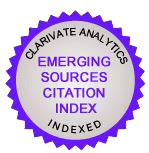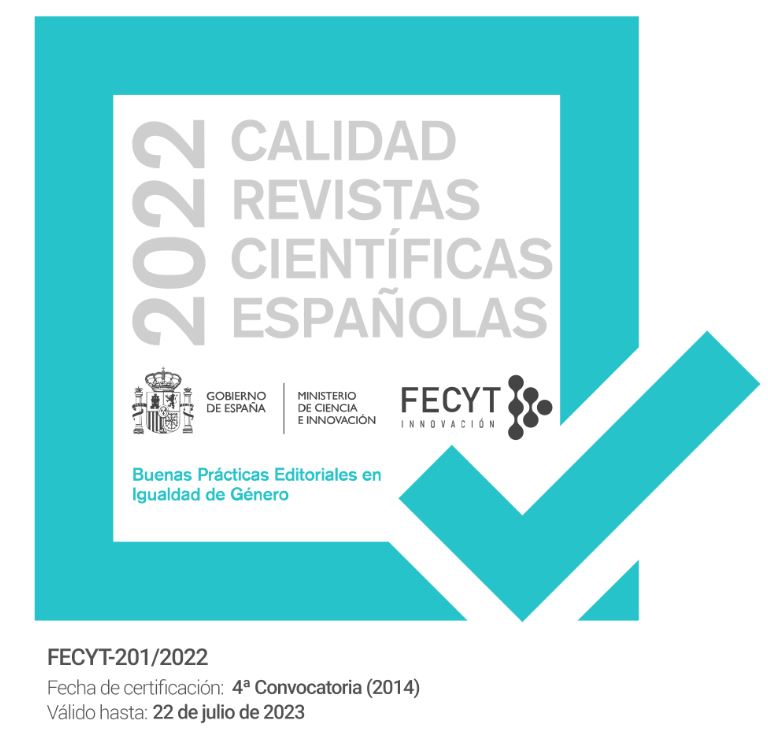ASSESSMENT OF GENERIC COMPETENCIES IN CIVIL ENGINEERING STUDENTS DURING PRE-PROFESSIONAL INTERNSHIPS
DOI:
https://doi.org/10.30827/eticanet.v25i1.32771Keywords:
generic competencies, civil engineering, pre-professional internships, work experience questionnaire, professional successAbstract
Pre-professional internships are crucial in training civil engineering students, as they foster the development of generic competencies essential for professional success and workplace adaptability. This study assessed these competencies using a quantitative, descriptive, and correlational approach with a cross-sectional design through an adapted and validated Work Experience Questionnaire (WEQ) version. Ninety-five students from the seventh and eighth levels at Salesian Polytechnic University were surveyed, focusing on Clear Goals, Workplace Support, University Support, and Generic Competencies. The instrument's reliability was confirmed with high Cronbach's alpha values (>0.90), and exploratory (EFA) and confirmatory factor analyses (CFA) supported its structural validity. The findings revealed that Clear Goals (r = 0.867) and Workplace Support (r = 0.838) significantly influence the development of generic competencies. In contrast, University Support (r = 0.690) showed a moderate effect. The multiple regression analysis corroborated these results. This study highlights the need for an integrated academic and workplace environment to maximize the impact of internships on the training of future civil engineers. A collaborative approach between universities and companies would not only facilitate the alignment of learning objectives with the demands of the labour market. However, it would also allow students to receive more structured and continuous support during their practical experience.
Downloads
References
Belchior-Rocha, H., Casquilho-Martins, I., & Simões, E. (2022). Transversal Competencies for Employability: From Higher Education to the Labour Market. Education Sciences, 12(4), 255. https://doi.org/10.3390/educsci12040255 DOI: https://doi.org/10.3390/educsci12040255
Bentler, P. M., & Bonett, D. G. (1980). Significance tests and goodness of fit in the analysis of covariance structures. Psychological Bulletin, 88(3), 588–606. https://doi.org/10.1037/0033-2909.88.3.588 DOI: https://doi.org/10.1037//0033-2909.88.3.588
Bicaj, A., Berisha, F., & Gisewhite, R. (2024). Exploring In-Service Science Teachers’ Self-Perceptions of Competence and Pedagogical Approaches to Socioscientific Issues in Education. Education Sciences, 14(11), 1249. https://doi.org/10.3390/educsci14111249 DOI: https://doi.org/10.3390/educsci14111249
Cedeño, L., & Santos, J. (2017a). Cita sugerida (APA, sexta edición). Revista Conrado, 13(58), 30–35. http://conrado.ucf.edu.cu/index.php/conrado
Cedeño, L., & Santos, J. (2017b). Pre-professional practice: via for integral professional training sinde its investigation impacts. Revista Conrado, 13(58), 30–35. http://scielo.sld.cu/scielo.php?script=sci_arttext&pid=S2218-36202017000300016&lng=es&tlng=es.
Cortina, J. M. (1993). What is coefficient alpha? An examination of theory and applications. Journal of Applied Psychology, 78(1), 98–104. https://doi.org/10.1037/0021-9010.78.1.98 DOI: https://doi.org/10.1037//0021-9010.78.1.98
Ferreira, C., Gabriel, B., Valente, R., Andrade-Campos, A., Dias-de-Oliveira, J., Neto, V., Soares, S., Carvalho, T., & Figueiredo, C. (2024). In Search of a More Balanced Engineering Curriculum: The Perspective of Students, Teachers, Alumni and Employers. Trends in Higher Education, 3(1), 142–154. https://doi.org/10.3390/higheredu3010008 DOI: https://doi.org/10.3390/higheredu3010008
Fiallos, G. (2021). La Correlación de Pearson y el proceso de regresión por el Método de Mínimos Cuadrados. Ciencia Latina Revista Científica Multidisciplinar, 5(3), 2491–2509. https://doi.org/10.37811/cl_rcm.v5i3.466 DOI: https://doi.org/10.37811/cl_rcm.v5i3.466
Goteng, G. L., Shohel, M. M. C., & Tariq, F. (2022). Enhancing Student Employability in Collaboration with the Industry: Case Study of a Partnership with Amazon Web Services Academy. Education Sciences, 12(6), 366. https://doi.org/10.3390/educsci12060366 DOI: https://doi.org/10.3390/educsci12060366
Guarnizo Crespo, S. F. (2018). Importancia de las prácticas pre profesionales para los estudiantes de Educación Superior en la Universidad de Guayaquil. INNOVA Research Journal, 3(8), 14–26. https://doi.org/10.33890/innova.v3.n8.2018.717 DOI: https://doi.org/10.33890/innova.v3.n8.2018.717
Hu, L., & Bentler, P. M. (1999). Cutoff criteria for fit indexes in covariance structure analysis: Conventional criteria versus new alternatives. Structural Equation Modeling: A Multidisciplinary Journal, 6(1), 1–55. https://doi.org/10.1080/10705519909540118 DOI: https://doi.org/10.1080/10705519909540118
Izquierdo Bautista, J. (2020). Métodos de análisis estadístico con datos dispersos. Ingeniería y Región, 24, 86–98. https://doi.org/10.25054/22161325.2537 DOI: https://doi.org/10.25054/22161325.2537
Lloret-Segura, S., Ferreres-Traver, A., Hernández-Baeza, A., & Tomás-Marco, I. (2014). El análisis factorial exploratorio de los ítems: una guía práctica, revisada y actualizada. Anales de Psicología, 30(3), 1151–1169. https://doi.org/10.6018/analesps.30.3.199361 DOI: https://doi.org/10.6018/analesps.30.3.199361
Luk, L. Y. Y., & Chan, C. K. Y. (2020a). Adaptation and validation of the Work Experience Questionnaire for investigating engineering students’ internship experience. Journal of Engineering Education, 109(4), 801–820. https://doi.org/10.1002/jee.20351
Luk, L. Y. Y., & Chan, C. K. Y. (2020b). Adaptation and validation of the Work Experience Questionnaire for investigating engineering students’ internship experience. Journal of Engineering Education, 109(4), 801–820. https://doi.org/10.1002/jee.20351 DOI: https://doi.org/10.1002/jee.20351
Martin, E. (1997). The effectiveness of different models ofwork-based university education. Evaluations and Investigations Program, Higher Education Division. http://www.dest.gov.au/archive/highered/eippubs/eip9619/front.htm
McAlexander, S. L., Blanchard, M. R., & Venditti, R. A. (2024). Transfer Students’ Perceptions of Science and Engineering Internships. Sustainability, 16(15), 6429. https://doi.org/10.3390/su16156429 DOI: https://doi.org/10.3390/su16156429
Narayanaswamy, R., Albers, C. S., Knotts, T. L., & Albers, N. D. (2024). Sustaining and Reinforcing the Perceived Value of Higher Education: E-Learning with Micro-Credentials. Sustainability, 16(20), 8860. https://doi.org/10.3390/su16208860 DOI: https://doi.org/10.3390/su16208860
Nogueira, T., Magano, J., Fontão, E., Sousa, M., & Leite, Â. (2021). Engineering Students’ Industrial Internship Experience Perception and Satisfaction: Work Experience Scale Validation. Education Sciences, 11(11), 671. https://doi.org/10.3390/educsci11110671 DOI: https://doi.org/10.3390/educsci11110671
Ragusa, A., Caggiano, V., Trigueros Ramos, R., González-Bernal, J. J., Gentil-Gutiérrez, A., Bastos, S. A. M. C., González-Santos, J., & Santamaría-Peláez, M. (2022). High Education and University Teaching and Learning Processes: Soft Skills. International Journal of Environmental Research and Public Health, 19(17), 10699. https://doi.org/10.3390/ijerph191710699 DOI: https://doi.org/10.3390/ijerph191710699
Rajabzadeh, A. R., Long, J., Saini, G., & Zeadin, M. (2022). Engineering Student Experiences of Group Work. Education Sciences, 12(5), 288. https://doi.org/10.3390/educsci12050288 DOI: https://doi.org/10.3390/educsci12050288
Roco-Videla, Á., Flores, S. V., Olguín-Barraza, M., & Maureira-Carsalade, N. (2023). Cronbach’s alpha and its confidence interval. Nutrición Hospitalaria, 38(4), 877–878. https://doi.org/10.20960/nh.04961 DOI: https://doi.org/10.20960/nh.04961
Terán, S. (2019). Guía metodoloógica para evaluar estadísticamente la incidencia de las prácticas pre-profesionales en la formación y ejercicio del futuro ingeniero civil. Pontificia Universidad Católica del Ecuador.
Downloads
Published
Issue
Section
License
The authors who publish in this journal agree to the following terms: The authors retain the copyright and grant the journal the right to be the first publication of the work as well as licensed under a Creative Commons Attribution License that allows others to share the work with an acknowledgment of the authorship of the work and the initial publication in this magazine. Authors are allowed and encouraged to disseminate their work electronically (for example, in institutional repositories or on their own website) before and during the submission process, as it may lead to productive exchanges as well as further citation. Earliest and greatest of published works (See The Effect of Open Access).













